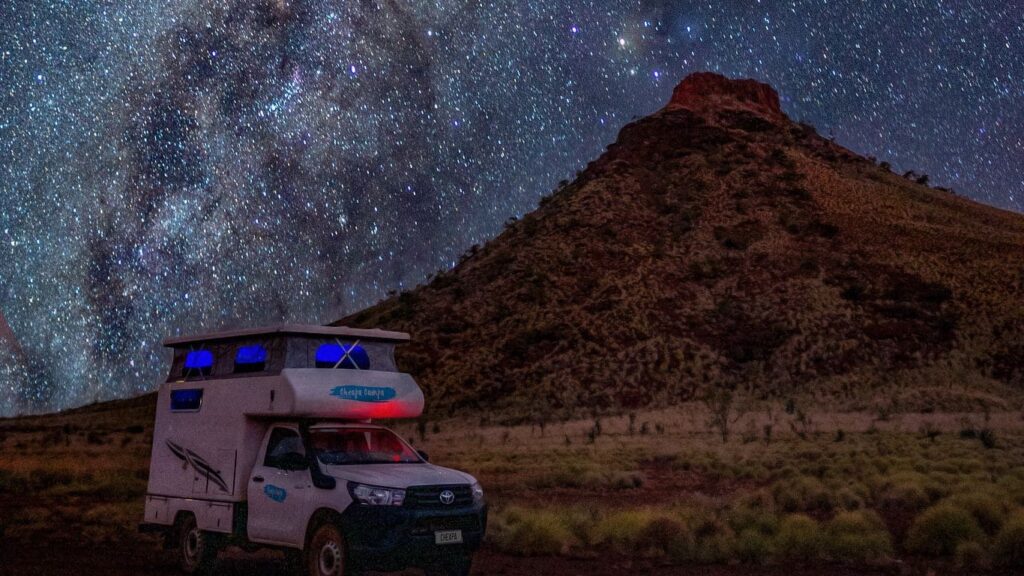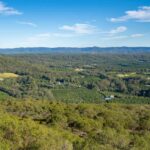
Australia is renowned for its diverse landscapes and clear, dark skies, making it one of the best places in the world for stargazing. From the magnificent Outback to coastal regions and national parks, Australia offers numerous spots where you can experience the wonder of the night sky. In this article, we will explore some of the best places for stargazing in Australia, providing you with the ultimate guide to planning your next celestial adventure.

Uluru – A Mesmerizing Experience
Uluru, also known as Ayers Rock, stands as one of Australia’s most iconic natural landmarks. Located in the heart of the Northern Territory’s Red Centre, this UNESCO World Heritage site offers not only breathtaking daytime views but also spectacular night skies. The remote location ensures minimal light pollution, providing a clear perspective of constellations like the Southern Cross and the Milky Way. Visitors can either book guided stargazing tours that educate about the stars and their significance to Indigenous Australian culture, or venture out on their own after sunset for a truly personal experience. The contrast of the red rock against a star-studded sky creates an ethereal atmosphere that captivates anyone willing to admire it.

Lake Taupo – A Celestial Playground
Although technically located in New Zealand, Lake Taupo is frequently included in stargazing itineraries that cover southern Australia due to its proximity and shared stunning views of the Southern Hemisphere’s sky. Set amidst natural hot springs and beautiful landscapes, Lake Taupo is far from city lights, allowing for incredible star visibility. If you’re lucky, you might even catch a glimpse of the Aurora Australis, also known as the Southern Lights, during certain times of the year. Visitors can take advantage of local guided tours that provide telescopes and expert insights into the night sky. In addition, various accommodations around the lake cater specifically to stargazers, featuring outdoor decks and lakeside views to enhance the experience.
The Blue Mountains – Nature Meets Astronomy
Just a short drive from Sydney, the Blue Mountains are a hidden gem for stargazers. This stunning region is not only famous for its lush eucalyptus forests and dramatic cliffs but also for its dark skies, which provide a canvas for a shimmering array of stars. The Blue Mountains Astronomy Group often holds events in the area, offering public viewing sessions where you can observe the celestial wonders through professional telescopes. Additionally, the area is home to several lookouts that offer panoramic views, making it easy to find a perfect spot to lay back and enjoy the cosmos. Don’t forget to bring along a blanket and some snacks to enhance your stargazing experience.

Kata Tjuta – An Astral Oasis
Another captivating location within the Uluru-Kata Tjuta National Park is Kata Tjuta, also known as the Olgas. This unique geological formation comprises 36 domed rocks and forms a striking landscape against the crystal-clear night sky. The area is celebrated for its deep cultural significance to the Anangu people and presents a serene environment for stargazing enthusiasts. Visitors can join ranger-led tours that combine Indigenous stories with astronomical insights or explore independently as they marvel at the infinite stars above. The isolation of this site ensures an uninterrupted view of the cosmos, making it perfect for photography as well. As you witness the Milky Way arcing above the domes, you will truly feel connected to the universe.

Dark Sky Reserves – Protected Starlit Havens
Australia is home to several designated Dark Sky Reserves that provide optimal stargazing conditions free from artificial light. One notable example is the Warrumbungle National Park in New South Wales, renowned for its efforts to preserve its starry skies. Here, you’ll find an array of trails and lookouts perfect for stargazing. Others include the Galloway International Dark Sky Park and the Mount Goonaneman Observatory, which hosts regular astrophotography workshops and public stargazing events. These reserves not only protect the night skies but educate visitors about the importance of preserving our celestial heritage.
Conclusion
Australia is a stargazer’s paradise, featuring diverse landscapes that provide some of the clearest and darkest skies on the planet. Whether you find yourself at the iconic Uluru, in the stunning Blue Mountains, or at designated Dark Sky Reserves, the opportunity to connect with the universe awaits. Each spot offers a unique experience time and time again, appealing to both seasoned astronomers and curious novices alike. Pack your telescope, grab a blanket, and prepare for nights filled with wonder and discovery under the expansive Australian sky.
Frequently Asked Questions
The best time for stargazing in Australia is typically during the winter months, from June to August, when skies are clearer and the air is cooler, reducing heat distortion.
2. Do I need special equipment for stargazing?
While a telescope can enhance your experience, many remarkable sights can be appreciated with just the naked eye or binocularity. A star map or stargazing app is also useful.
3. Are there organized tours for stargazing?
Yes, many locations offer guided stargazing tours that provide telescopes and expert guidance, making it easier for you to learn about and observe celestial phenomena.
4. Is Uluru a good place for astrophotography?
Absolutely! Uluru’s remote location and breathtaking landscapes make it a fantastic spot for astrophotography, especially capturing the Milky Way and star trails.
5. Can I stargaze at night in national parks?
Yes, many national parks in Australia allow night access for stargazing; however, it’s essential to check park regulations and safety guidelines beforehand.









